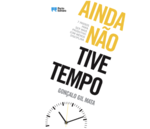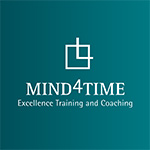Bank of China Tower, HONG KONG
Examples of Action Repository
Examples of Action Repository models and components can be for instance email items that represent pending activity, ordered in folders or some other type of grouping feature. Other examples include big Excel lists, task managers, or specific apps for that purpose. Like Collectors, your Action Repository is hardly kept in a single place. Though it can be very interesting to group everything in a single powerful application, some stuff just doesn't belong or even translate naturally if you take it out of its world.
About Location
This rich discussion involves both access and feeding. Supermarkets lists on a fridge are easily fed while you are cooking. (you can have your super app nearby, but it's just less natural to do so). Of course if you are in the supermarket, and the list is on the fridge, that's hardly convenient. Similarly, an Amazon wish list belongs more naturally within your Amazon account. Books you bought and intend to read next probably belong on your bedside table, movies you'll see next belong in a specific computer folder. Though certainly possible, trying to centralize too much these kind of action-representatives is not likely to make your world better.
Success Criteria
How do you know if your Action Repository is working well? The purpose of Action Repository is to allow you to make good choices about where to invest your resources next. 'Next' is important in the equation. Next...hours? ...days? ...years? The scope of this decision will certainly require different levels of access and navigation through the repository. Choosing what to eat tonight is hardly on the same level as considering introducing more healthy eating habits as a new year's resolution.
A good action repository is easy to feed, easy to explore, easy to maintain. And that requires structure, which we'll see next.
Organization In General
What is a well organized Action Repository? Organization in general has a tendency to be made simpler once you orient it to functionality, not intrinsic characteristics of the items. For example, in your kitchen you wouldn't mix dirty glasses with clean glasses, no matter how similar they are. In your email, messages representing pending items should't be in the same folder as "done" items, even if they address the same subject or project.
In some cases, the action-oriented characteristics of the items are similar: for example in archive systems, all items have a similar action: nothing. Organization then tends to become alphabetic or theme based. In a library, for example, all books apparently share pretty much the same functionality: they are there to be found and read. Even so, you won't have returned-to-be-put-in-place books mixed with new-to-be-categorized books or ready-in-the-shelf ones, for example. In a general way, organizing is typically better addressed based upon action-oriented grouping rather than inner characteristics classification.
Structuring Action Repository
Structuring an action repository has many many possibilities. First of all, remember to recall the purpose: you want to navigate through your pool of opportunities and select wisely and in a well informed way what you will put your focus on next. I think a clever way of making some initial compartiments in your system is dividing your roles.
Your roles are the most action-oriented divisions of your person, and so they will ultimately be the orienting structure of everything you can do: What do you exist for? What is the added value of your person? What are your missions? You'll probably answer that with some of these possibilities: I'm a member of a family, I'm a member of society, I'm a friend, I'm a worker, I'm a person and supposed to be happy and have fun, etc...
We'll address this later a bit further. For now, consider separating two groups: work and personal life as a rule of thumb, and subdivide from there. If you have multiple businesses, you might consider that as a big root division also. For that subdivision, take for example work, where you might want to divide your job between different roles and functionalities. For example, if you are a general director of a company, maybe you distinguish: "people development", "strategic planning", "operational management", "sales supervision", etc, being that in each of those you can determine a different "functionality" for your contribution. This will get you the major clustering of your Action Repository items. I'll further explore this on the next article. Your assignment for now is get the general map of roles. I suggest you choose between 3-7 divisions per big topic. Here is an example:
PERSONAL:
- people
- health
- fun
- future
- systems & maintenance
WORK:
- people motivation & development
- project & operations management
- sales & marketing
- finances
- r&d
- strategic planning
- systems & maintenance





My "action repositories" are easy to feed but then not so easy to explore or mantain. Sometimes I overlook items that have been there for quite some time... only paying attention to the most recent ones. Also if I separate professional from personal... the latter will most likely be left unattended...